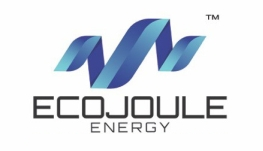EcoVAR Pole-Mounted Static Compensator (STATCOM) Voltage Regulator
EcoJoule Energy’s EcoVAR is a Static Compensator (STATCOM) solution for dynamic voltage regulation and grid support. EcoVAR offers a scalable and flexible solution to the growing instability of global network grids and helps address the challenges posed by distributed energy resources (DERs).
EcoVAR is much more than a STATCOM. It is an intelligent, pole-mounted voltage regulator equipped with proprietary control algorithms and a robust monitoring platform that enables real-time interaction with grid conditions.
Our Customers
Download the White Paper:
Overvoltage: The Hidden Electricity Thief
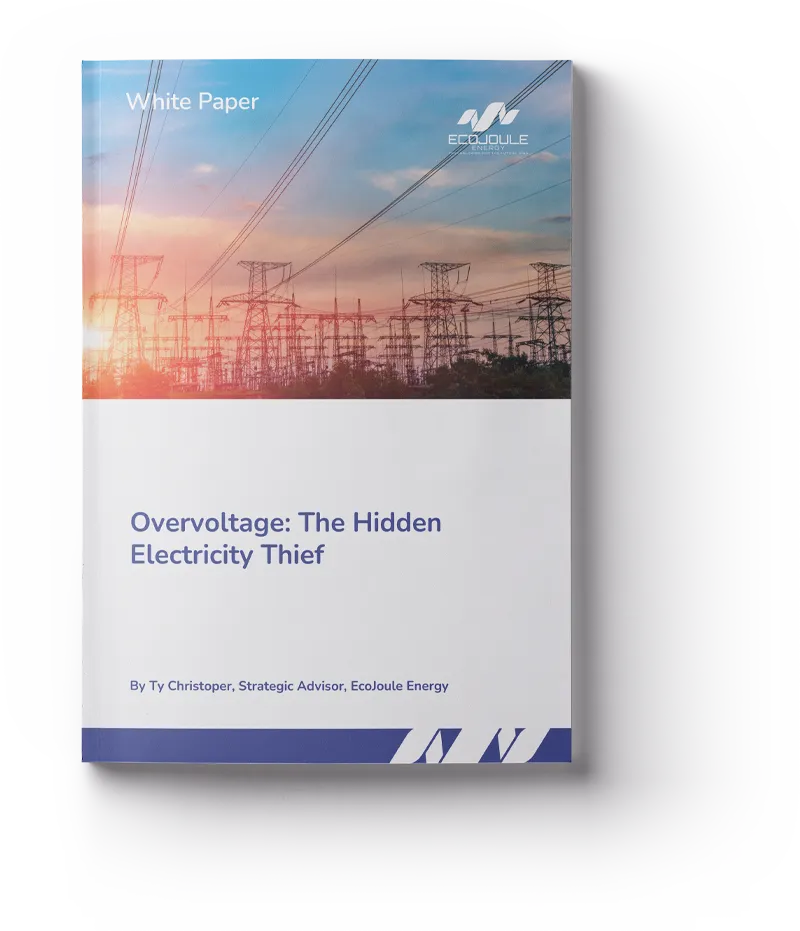
Greater Grid Stability in the Age of Distributed Energy
The voltage fluctuations, voltage imbalance and harmonics caused by distributed energy resources (DER) have become a persistent issue for many distribution networks. As rooftop solar, home battery and electric vehicle (EV) penetration increases, so too does the variability in energy supply, demand and balance.
Voltage Control for Reduced Solar Curtailment
This is especially prevalent during sunny midday periods when demand is low and solar systems are exporting energy. This can lead to over-voltage events, forcing inverters to curtail output and, ultimately, reducing the efficiency and return on investment of rooftop solar systems. Likewise periods of high demand driven by home battery and EV charging can lead to under-voltage events, driving consumer voltages outside agreed standards.
EcoVAR addresses these voltage issues by providing precise reactive power compensation where needed. EcoVAR helps maintain voltage within the acceptable range, ensuring that distributed solar continues to operate effectively while protecting customer appliances and grid infrastructure.
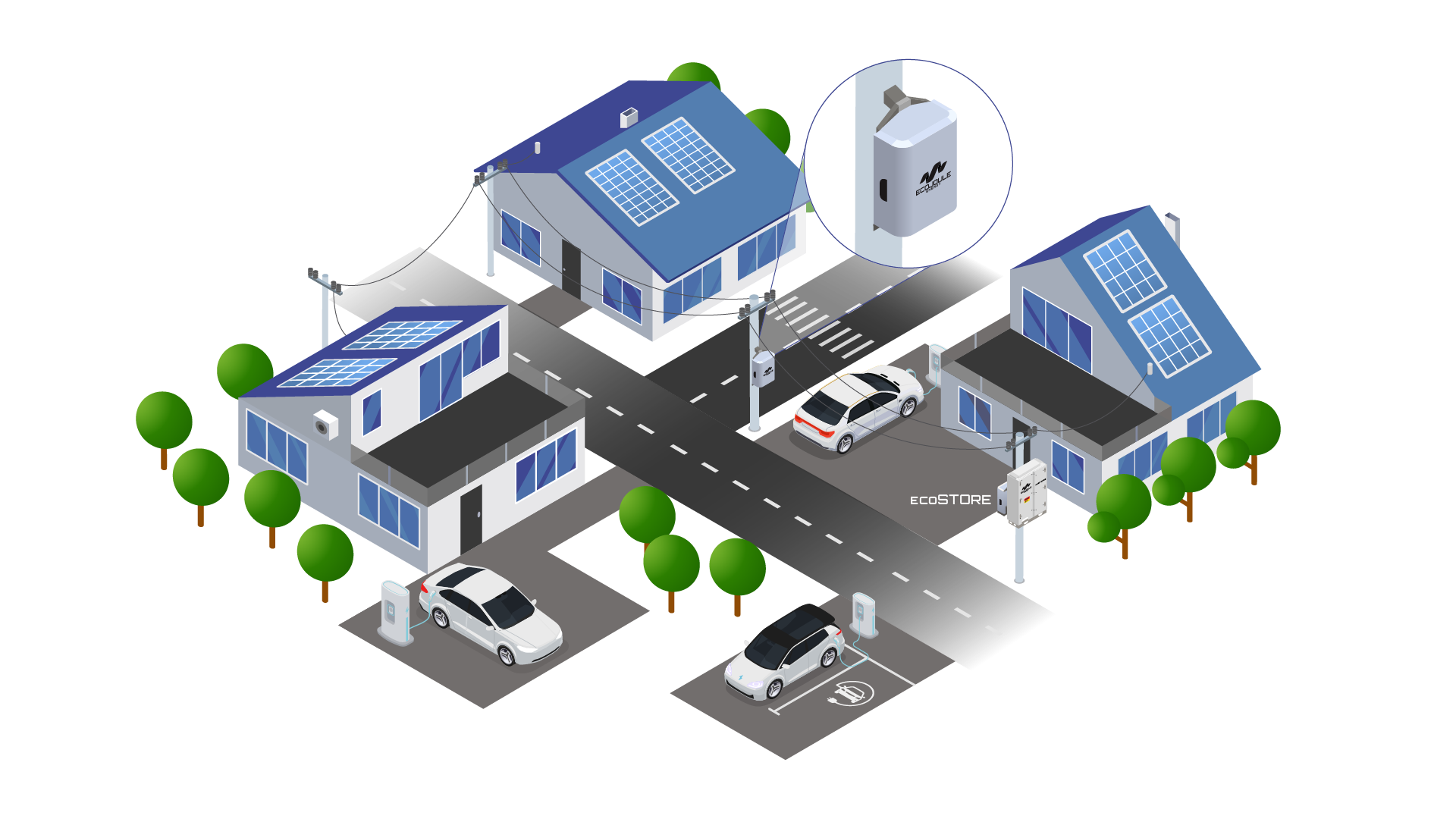
Imbalance Correction for a Safer Grid
Phase imbalance is a growing challenge, driven by the increasing rooftop solar, home battery and EV charger adoption on single-phase residential connections. Consumer voltage levels can fluctuate dynamically throughout the day in ways that traditional re-balancing methods cannot resolve.
EcoVAR’s patented technology not only transfers real power between phases but also injects reactive power on a per-phase basis. This unique approach delivers highly effective phase imbalance correction across all networks, improving reliability while at the same time reducing neutral voltages and enhancing safety.
Advanced Harmonic Filtering for a Future-Ready Grid
EcoVAR also includes Active Harmonic Filtering (AHF), allowing users to enable filtering of odd harmonics up to the 11th without the need for installing current transformers on LV lines. By using terminal voltage for compensation, the system delivers a simple, flexible, and effective approach to harmonic mitigation.
Unlike passive filters, which are fixed, bulky, and susceptible to resonance issues, active filters are adaptive, modular, and capable of dynamically responding to grid changes in real time. While passive solutions provide fixed reactive power, EcoVAR’s active approach combines harmonic filtering with dynamic reactive power compensation, ensuring the system continues to perform as the grid evolves.
Greater Grid Stability in the Age of Distributed Energy
The voltage fluctuations, voltage imbalance and harmonics caused by distributed energy resources (DER) have become a persistent issue for many distribution networks. As rooftop solar, home battery and electric vehicle (EV) penetration increases, so too does the variability in energy supply, demand and balance.

Build A Stronger Grid, With Less Investment
Traditional grid upgrades to address voltage variance are capital intensive and time-consuming. By installing EcoVAR units at critical points on a network, utilities can defer or completely avoid the need to upgrade ageing infrastructure, especially in fringe-of-grid or high-growth areas. This offers a more flexible, lower-cost, and faster-deployment alternative to conventional grid investment.
By regulating voltage and balancing load more efficiently, EcoVAR helps optimise the use of existing grid assets. Rather than overbuilding capacity to handle peak conditions, utilities can use EcoVAR to enhance performance during periods of instability, increasing the resilience and lifespan of existing transformers, conductors, and other grid components.
In the event the local network needs a Battery Energy Storage System (BESS) to address peak demand and/or thermal capacity constraints, EcoVAR can be seamlessly upgraded to a pole-mounted EcoSTORE BESS. The upgrade simply involves adding the battery enclosure on the same pole as EcoVAR and enabling the upgrade via remote software updates. This provides a cost-effective path from STATCOM functionality to full energy storage, solving peak demand constraints while also improving power quality.
A Technological Leap for Voltage Regulators
EcoVAR’s solid-state design and instantaneous response time are a paradigm shift for voltage regulation. Conventional voltage regulators often rely on step-voltage regulators and line-drop compensators, which are slow to react and have limited control ranges. These systems were designed for unidirectional power flow from centralised generators to consumers, not the bidirectional flows now common in grids with high DER uptake.
EcoVAR uses advanced power electronics and firmware developed by EcoJoule Energy’s engineering team. It senses voltage changes at sub-cycle resolution and injects leading or lagging reactive power as required to correct them. The unit is designed for deployment at key locations on the network, such as distribution transformers, feeders, or strategic customer sites. Its small footprint, low-maintenance design, and remote operability make it a versatile choice for utilities facing a wide array of grid challenges.
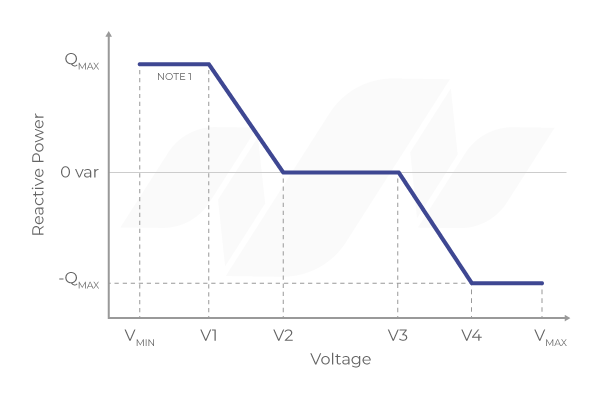
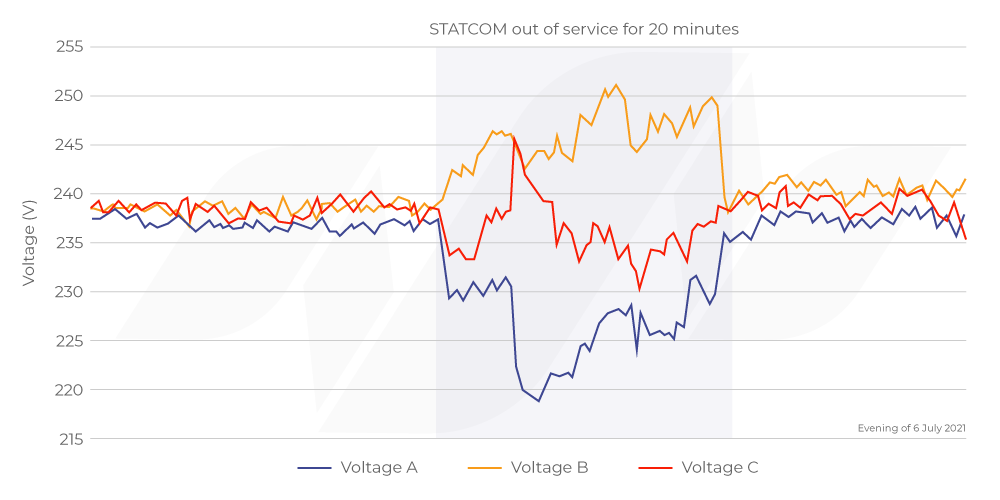
Simple Software Delivers Complete Control
EcoVAR utilises EcoJoule Energy’s custom software to deliver a seamless user experience. Our software is designed with user friendliness in mind. Set-up, commissioning, monitoring, software updates and custom programming can all done from any browser-ready smart device (eg. laptop, tablet, smartphone) while parameters and settings are in plain English, not obscure code.
Values and variables can be graphed in real time and a rich history can be downloaded. The control platform has been validated through many years of field operation across a wide range of climates, from the dry heat of inland Australia to the cold, damp conditions of Northern Europe.
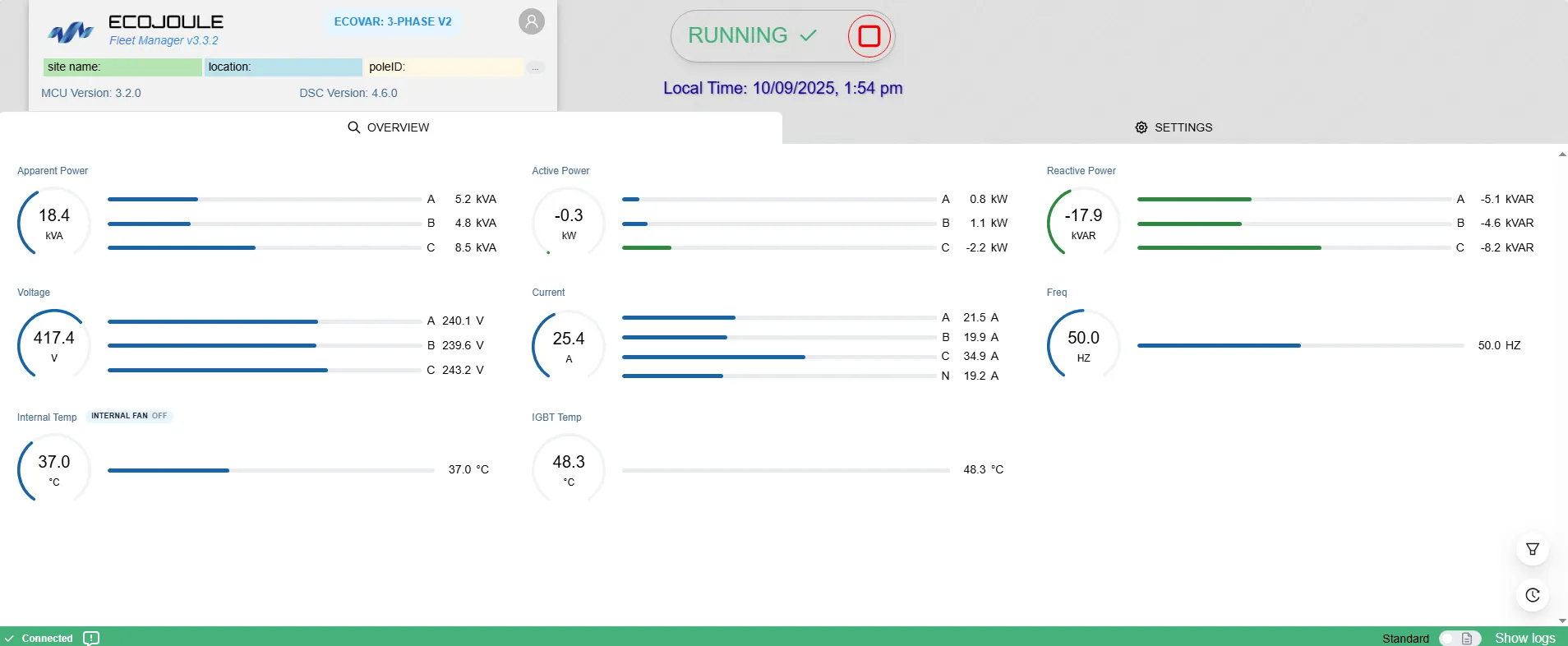
Technical Features
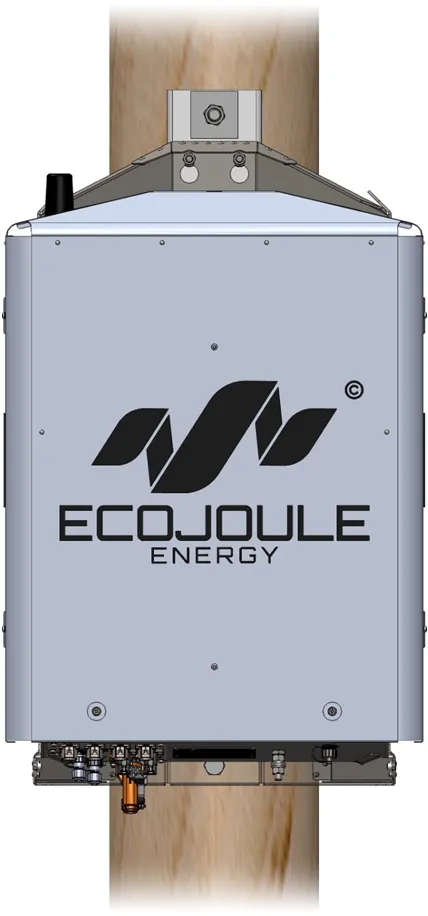
A Partner You Can Trust
EcoJoule Energy was established to provide high-quality, reliable, and cost-effective power electronics solutions to the electricity utility industry. Its founders bring together industry-leading expertise and experience in power electronics, software, and power systems design, having spent many years in senior R&D positions for major multinational companies.
Building a Modern Grid for Modern Energy Users
Grid operators are under increasing pressure to modernise their infrastructure and accommodate more flexible, decentralised energy flows. Voltage control and reactive power management are key pillars of this transformation. EcoJoule Energy’s EcoVAR offers a turnkey solution that integrates seamlessly with existing distribution networks and supports the grid of the future.
One of the defining features of EcoVAR is its ability to communicate with utility control systems via industry-standard protocols. This enables it to be part of advanced distribution management systems (ADMS) and DER management platforms. When deployed as part of a fleet, multiple EcoVAR units can operate in coordination to deliver area-wide voltage control and grid stability services, functioning as a virtual power plant (VPP) of reactive power support.
This coordinated approach enables utilities to shift from reactive to proactive grid management. Instead of responding to voltage complaints after they occur, operators can deploy EcoVAR preemptively in locations likely to experience future voltage constraints. This not only improves network reliability but also reduces the operational costs associated with traditional, maintenance-heavy voltage regulation equipment.
Smarter Power for a Smarter Grid
EcoJoule Energy delivers intelligent, Australian-made power management systems that improve energy quality, reliability, and efficiency.
Resilience Where It Matters Most
EcoJoule’s technology enhances grid stability and performance, particularly in fringe-of-grid and renewable-heavy networks.
Supporting the Energy Transition
EcoJoule supports utilities and communities in their transition to a cleaner, more distributed energy future.
Technical Specifications
| Specification | Value |
|---|---|
| Steady State Operating Voltage Range | 180 – 260V (L-N) |
| Continuous Rating | 40kVA |
| Maximum Continuous Rated Current | 63.5A |
| Reactive Power | -40kVAr to 40kVAr |
| Reactive Power Control | Continuous |
| Active Power Control | Ability to transfer active power between phases |
| Active Power Transfer Limit | Neutral current limited to rated current |
| Nominal Frequency | 50Hz |
| Ambient Temperature | -20°C to 50°C |
| Maximum Solar Loading | 1100 W/m2 |
| Heatsink Cooling | Speed controlled fan |
| Efficiency | 98.50% |
| Current Harmonics | <4% THD at full load |
| Output Switching Frequency | 24kHz |
| Audible Noise | <25dBA at 10m |
| Communications | Ethernet interface to Cellular Modem, DNP3 & Modbus protocol supported |
| Anti-Islanding | Active and Passive as per AS/NZS 4777.2:2020 |
| Voltage Dip Support | Voltage dips to 130V supported via injection of maximum reactive power |
| Enclosure | Powder-coated 304 Stainless Steel, “surf-mist” colour |
| Mechanical Protection | IP56 |
| Mounting | Pole mounted via coach bolt or pole straps |
| Dimensions (H x W x D mm) | 1109 x 665 x 478 |
| Weight | Approx. 80kg |
| Standards Compliance | Designed to AS/NZS 4777, AS IEC 62477.1, AS/NZS 61000.3.11, AS/NZS 61000.3.12, AS/NZS 60529 |
